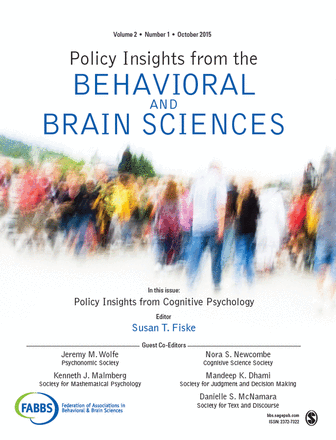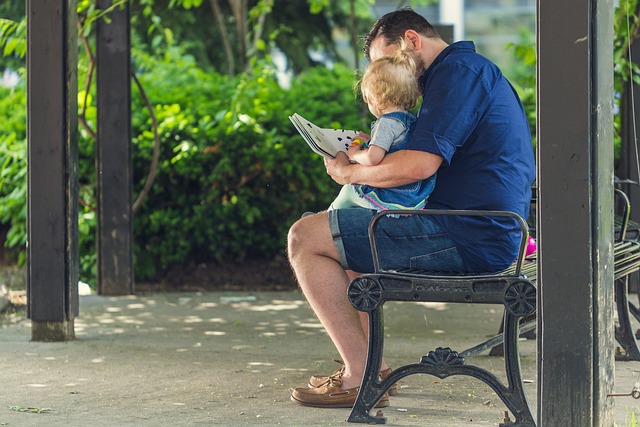Tackling Gender Stereotypes With the Power of Words
 It wasn’t long ago that using the honorific title “Ms.” was considered revolutionary. Yet its relatively quick adoption contributed to large strides in gender equality, by erasing marital status from a woman’s professional identity. But the English language, and those of us who speak it, have a long way to go when it comes to eradicating gender stereotypes, write researchers Rebecca Bigler and Campbell Leaper in a recent article for Policy Insights from the Behavioral and Brain Sciences. Their research review shows that gendered language remains pervasive and detrimental, reinforcing stereotypes and limiting children’s conceptions of what women and men can and should do.
It wasn’t long ago that using the honorific title “Ms.” was considered revolutionary. Yet its relatively quick adoption contributed to large strides in gender equality, by erasing marital status from a woman’s professional identity. But the English language, and those of us who speak it, have a long way to go when it comes to eradicating gender stereotypes, write researchers Rebecca Bigler and Campbell Leaper in a recent article for Policy Insights from the Behavioral and Brain Sciences. Their research review shows that gendered language remains pervasive and detrimental, reinforcing stereotypes and limiting children’s conceptions of what women and men can and should do.

The Federation of Associations in Behavioral and Brain Sciences, or FABBS, with SAGE, the parent of Social Science Space, publishes the journal Policy Insights from the Behavioral and Brain Sciences. This journal features research findings in the sciences of mind, brain, and behavior that are applicable to nearly every area of public policy. The second issue features 22 articles focused on cognitive psychology focused on topics including education, health, evaluating and mitigating risk, law, and improving society.
Gendered language is embedded in many of the ways we identify one another: not only in honorific titles like Sir and Ma’am, but in occupational titles (like fireman and waitress) and pronouns (like he and she). Even the first names our parents bestow upon us typically contain cues about gender; as any expectant parent knows, baby name lists are almost always divided into “boy names” and “girl names.” Gendered language is so entrenched that it may seem natural or unchangeable, but Bigler and Campbell disagree, pointing out both the problems it can cause and ways we can avoid them.
A long line of research shows that the words we use affect how we think, and the authors say that our language about gender is no exception. Gendered language shapes how we think about the appropriate roles for men and women, especially when we are children and just beginning to form our understanding of the world, write Bigler and Campbell. Children naturally seek to categorize things in their environment in order to make sense of them. When adults repeatedly use gendered words, this makes gender seem very important and leads children to use it as a primary way of categorizing people (as opposed to using, for example, eye color or height).
That might not sound like a problem, but the authors cite research suggesting that, during the categorization process, children begin to associate certain traits with men and others with women, buying into and reinforcing gender stereotypes. For example, a 2010 study found that when preschool teachers were randomly assigned to either use or avoid gender labels for a two-week period, the children in the labeled group conformed to stereotypes more than their peers and decreased the amount of time they spent playing with classmates of the opposite gender.
Although gendered language is often ingrained, it’s not inalterable.
… [S]ome people are beginning to use new gender-neutral pronouns such as ze (instead of she and he) and hir (instead of her and his)
To reduce its use, Bigler and Campbell recommend substituting neutral nouns whenever possible. Many job categories now have options for gender-neutral titles, such as firefighter and congressperson. Nouns can often be changed to gender-neutral alternatives as well.
“In the vast majority of instances,” the authors write, “individuals’ gender is marked unnecessarily, as when teachers greet their students with the expression ‘Good morning, girls and boys’ (as opposed to ‘Good morning, students’) or a parent informs a spouse, ‘I’ll pick up the girls from school’ (as opposed to ‘I’ll pick up the kids from school’).” The former versions can make gender salient, even when the speaker doesn’t intend the statement to be sexist and even when the statement doesn’t reinforce a particular stereotype. By contrast, the latter versions remove gender from the situation.
In addition, according to the authors, some people are beginning to use “new gender-neutral pronouns such as ze (instead of she and he) and hir (instead of her and his).” That may sound far-fetched, but the authors say that as part of Sweden’s commitment to gender equality, the official Swedish dictionary now includes a gender-neutral pronoun that is being used in media and in Parliament. Will English’s new words ze and hir become as common as Ms.? Only time will tell.



























































































